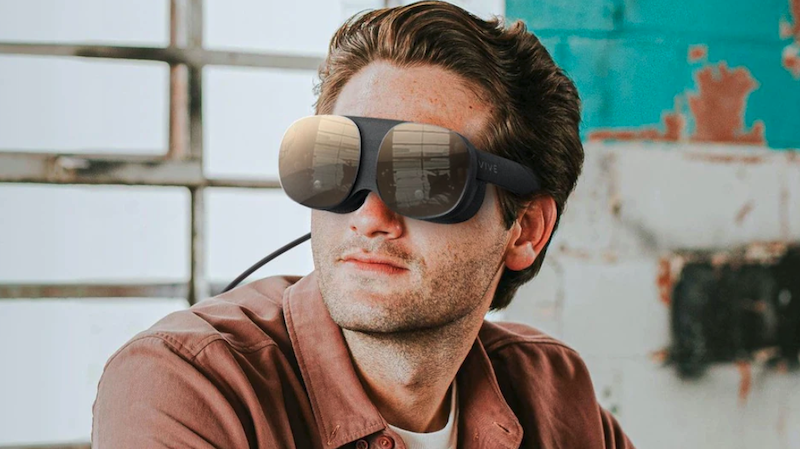This site contains affiliate links to products. We may receive a commission for purchases made through these links.
Six years ago, HTC released its first virtual reality (VR) headset.
What is the Vive Flow?
The Vive Flow will build on HTC’s VR tech but will be a departure from the standard gaming headset. Instead, the Flow will take a swing at phone-connected VR glasses. You may remember Google taking its shot at the augmented or smart glasses niche, with its Google Glass. That wasn’t exactly a hit. So, we’ll see how the Flow performs.
One difference is that products like Google Glass were positioned as all-the-time-wearables. You would put them on in the morning and theoretically wear them all day. The Flow takes the approach that you will want to have them with you at all times, but may only wear them when you need a little escape from reality or to use one of the apps or features that will eventually be available.
So, they aren’t exactly glasses in the standard sense. The Flow won’t actually let you see through the lenses unless you activate a passthrough camera, which would then enable wearers to see the outside world.
The Flow is also a return to phone-connected VR glasses, an area that has been largely ignored of late. But this might be an indication that the continued rollout of 5G will get VR headset manufacturers interested in the phone-connected arena again.
What are some of the features?
For people who already wear glasses, putting on another pair of VR glasses over them would likely be a detriment and maybe a deal-breaker. So, the Flow can actually make its own prescription adjustments. This means you can potentially wear the Flow in place of your corrective lenses.
Back to that feature where these can replace corrective lenses, mentioned above. The flow includes prescription-adjusting diopter technology allowing users to use a set of dials to effectively match your prescription. It remains to be seen if this will work for everyone, but the idea is that the feature should cover the most common ranges of eyeglass lens adjustments. This is a pretty fantastic feature for anyone who wears glasses and wants to use a VR set.
The Flow also works like a pair of glasses in the sense of the two sides folding in and out. This means the Flow will store compactly and be easy to put on and take off (no over-the-head elastic, etc.).
They deliver a 100-degree field of view through the lenses and a 3.2K resolution display with a 75Hz refresh rate, which will work with HTC’s Viveport user interface, much like its other VR headsets. The Flow should work with about 50 apps at launch.
The Flow isn’t going to be a fully functioning VR headset in the sense that other HTC VR products are. For example, there are no external controllers to play video games (although stay tuned for a number of external accessories to roll out in the not too distant future).
When Can I buy one?
The Vive Flow is scheduled to be available for purchase starting n November 2, 2021.
What will they cost?
The standard model of the Vive Flow will start at $500.
In the meantime, you can still find the HTC VIVE Pro Virtual Reality Headset.
